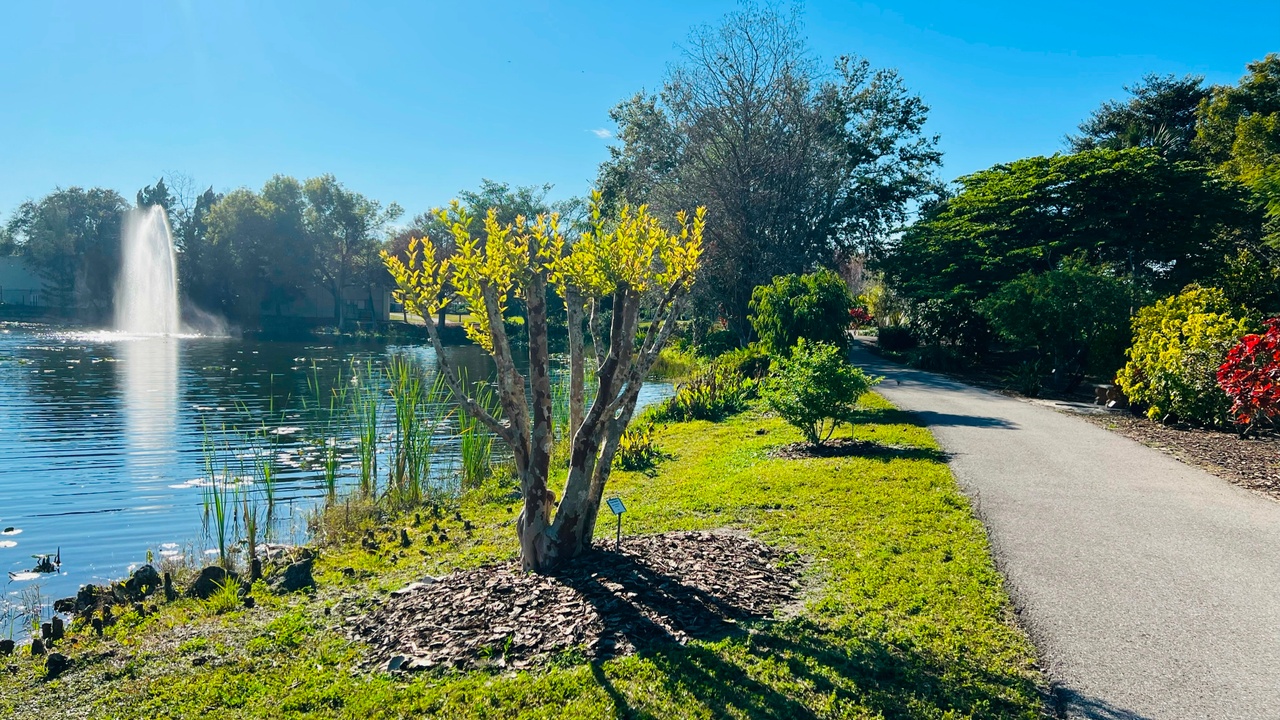How much exercise do you need to reap health benefits?

A georgeous February day in the Botanical Gardens of Lakes Park, Fort Myers, Florida. Photo Courtesy of Charly Caldwell II.
People often ask me how much exercise they really need.
The answer depends on several factors, but primarily I tell them to consider their current health status and fitness goals.
A tedious answer, I know, but the amount of exercise someone needs and/or is capable of in order to shed 10 pounds is very different from the amount someone needs who simply wants to keep their cholesterol in check and their heart healthy.
The Institute of Medicine recommends:
“At least 60 minutes each day of moderately intense physical activity to prevent weight gain and achieve the full health benefits of activity,” a recommendation further endorsed by the American Council on Exercise.
An hour of physical activity each day appears to be the magic number to optimize health and reduce the risk of various disease processes including heart disease and cancer.
While an hour a day may sound daunting at first, keep in mind that those 60 minutes need not be a 110 percent high-intensity effort.
The one hour can be cumulative, combining low-intensity daily life activities such as house cleaning and gardening with higher intensity activities such as swimming, cycling, walking, running and rowing.
To further complicate the issue, more recent studies have suggested that what is more important than the length of your workouts is the intensity.
Many researchers now believe that it’s the effort, rather than the duration, of exercise that really matters.
This is the foundation and basis of all Tabata and high-intensity interval training workouts.
Exercise physiologists reported in a study in Sport & Exercise that in young women, high-intensity cycling —compared with low-intensity cycling — resulted in significantly higher energy expenditure or calories burned during the exercise session and over the subsequent 24-hour period.
These finding suggest that health, fitness and performance are all maximized by working harder. This isn’t to say that you won’t benefit from lighter exercise, just that you will benefit more if you work harder during your training sessions.
Fortunately, there is an inverse relationship between duration and effort.
The harder you work, the shorter the exercise session can be.
But, of course, you need to be fit enough to sustain that high-intensity pace – which means you need to take the time to improve your fitness level through … what? … longer, more moderate exercise sessions, mixed with interval training to become accustomed to working at that higher effort level.
So what is the bottom line?
Be as active as you can, as often as you can, for as long as you can.
If you enjoyed this blog post, you'll really enjoy our 14 DAY MINDSET CHALLENGE which is part of our Monthly Membership program helping & supporting you toward living your best life!
Our Geared Up theme for you is "Health, Wellness & Fitness in a Multi-Sport Lifestyle". Find out all of the ways we can support you through our Membership programs here.
Let's go on this journey together and change your life as always, “Practice with Purpose and Live with Passion!
Angie Ferguson is an exercise physiologist and Tony Robbins Results Coach from Fort Myers, Florida. She also is a Corrective Biomechanics Specialist, USA Triathlon Advanced Level 2 coach, USA Cycling coach, has a Specialty in Sports Nutrition certification, and a PhD in results!

